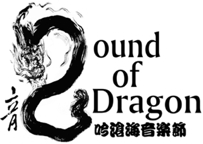
Lan Tung – composer
As a composer, Lan Tung creates a new voice that draws inspiration from her background in Chinese music and, at the same time, incorporates influences from various genres: from western contemporary music, creative improvisation, to various ethnic styles. Her rhythmic intricacy has a direct influence from Indian music, while her passionate melodies from Flamenco and Central Asian music, and the sense of breath/space from Chinese music. She uses elements of traditional music as bridges to connect between Asian and western ears, while experimenting with contradictions by taking culturally specific materials outside their context and fusing them with other genres. She also draws inspiration from ancient myth, philosophy, poetry, paintings, landscape, and other imageries. Incorporating improvisation and graphic notations with Asian traditions, she explores a new territory to discover fresh sounds.
Lan’s composition credits range from chamber, improvisational, world and fusion, theatre, dance, choral to film music. Her music has been performed by the Vancouver Symphony Orchestra,Turning Point Ensemble, Vancouver Inter-Cultural Orchestra (Vancouver & Toronto),Upstream Ensemble (Halifax), Atlas Ensemble (Amsterdam & Helsinki), Chai Found Music Workshop and Little Giant Chinese Chamber Orchestra (Taipei). Lan is the main composer of the Orchid Ensemble, and also composes regularly for Sound of Dragon Ensemble, Birds of Paradox and Lalun. In 2012, she established “Proliferasin” to perform her works written in the combination of graphic and conventional notations for improvising musicians. Lan’s compositions and arrangements can be heard on a number of CDs: From A Dream, Life Death Tears Dream, Birds of Paradox, Road to Kashgar, Heartland, and Tandava, winning multiple nominations by the JUNO Awards, Independent Music Awards, Canadian Folk Music Awards, Canadian Independent Music Awards, and Western Canadian Music Awards.
Oriole《鶯》(2016) – Lan Tung 董籃作曲
Oriole transforms a 1940s Chinese pop song and pays tribute to Shakti, the highly influential Indian fusion band led by John McLaughlin and Zakir Hussain in the 70s. The lyrical vocal line is contrasted with exciting fast instrumental melodies, and it showcases the ensemble members’ improvisational skills.
曲調源自1948年周璇主演並演唱的電影主題曲花外流鶯,樂曲的發展則深受印度70年代著名樂隊Shakti的影響,悠揚的人聲與節奏強烈的器樂部分形成鮮明的對比。
Sound of Dragon《龍吟滄海》(2014) – Lan Tung 董籃作曲
Composed for Vancouver’s inaugural Sound of Dragon Music Festival in May 2014, the piece starts with a phrase from a famous Chinese traditional piece “Crazy Snake Dance”. But it quickly departs into a new world, with a touch of African rhythms and improvised solos.
《龍吟滄海》以傳統「金蛇狂舞」曲調為出發,但樂曲的節奏、獨奏與伴奏的對答,有著濃厚的非洲音樂色彩。本曲由溫哥華跨文化管弦樂團於2014年第一屆龍吟滄海音樂節首演。
Ba Ban Variations《八板變奏曲》– Lan Tung 董籃作曲
Inspired by Ba Ban or Eight Phrases, the root of hundreds of pieces in traditional Chinese repertoire, this original work written for improvising musicians explores the contrasts between tonalities and genres. It embodies the paradox of many opposite characters: chromatic and pentatonic passages, composed and improvised materials, contemporary and traditional forms, with sudden shifts between surreal or mysterious quality and an exciting fast 3+2+3 rhythmic cycle. Ba Ban Variations was premiered by the Vancouver Creative Music Institute at 2009 Vancouver International Jazz Festival, and has since then been performed by a number of ensembles (Proliferasian, Birds of Paradox, Turing Point Ensemble, Upstream Ensemble, Little Giant Chinese Chamber Orchestra, Vancouver Inter-Cultural Orchestra, Orchid Ensemble) in Canada, US, Taiwan, and China. It is released by Birds of Paradox on its 2009 debut CD.《八板變奏曲》為即興演奏家所作,不限樂器編制,理念上繼承中國音樂傳統,將「八板」樂句加以發展,但以爵士風格展現,融合許多看似矛盾的元素:半音階結合五聲音階,依譜演繹對比即興發揮, 傳統音樂結構對比西方現代手法,神秘超現實色彩反差熱烈的快節奏。小樂隊版本收錄於非鳥樂隊專輯中,之後改編為即興演奏家與大型樂隊協奏曲,由Turning Point Ensemble、小巨人絲竹樂團、溫哥華跨文化管弦樂團、Proliferasian於加拿大、美國、台灣、中國多次演出。
Little Star《小明星》(2018) – Lan Tung 董籃作曲, feat. Cantonese opera vocalist
粵曲演唱,樂隊伴奏
Hopefully Happily Ever After《永遠幸福嗎?》– Lan Tung 董籃作曲
“….the prince and princess get married, and they live happily ever after”. Does the story really end there? This piece draws materials from a famous Cantonese opera excerpt “The Emperor’s Daughter” to create a ghostly graphic score. Unwilling to live under the ruling of the invading Manchurian, the beautiful princess and her husband committed suicide on their wedding night. This piece portraits the couple’s final moments. 融合廣東大戲、爵士樂、現代音樂元素,為三人以上即興演奏家所作,不限樂器編制,即興部分為圖像記譜。同年改編為即興演奏家與大型樂隊協奏曲,由阿姆斯特丹Atlas樂團首演,溫哥華交響樂團、小巨人絲竹樂團、 Proliferasian在加拿大及台灣多次演出。
Double Happiness《雙喜》(2014) – Lan Tung 董籃作曲,二胡&大提琴
Originally commissioned by Russell Wallace for erhu and violin, Lan re-arranged it for erhu and cello in 2016. This duet is inspired by the erhu solo piece Birds Singing in the Mountains (1928), which borrowed techniques from the violin. In Double Happiness, Lan has the western instrument playing the erhu techniques, such a the trio glissandi and fast rolling of the fingers over the same note. The two instruments echo each other in an intricate dialogue which develops into improvisation. 樂曲結構及素材來自劉天華先生於1928年譜寫的二胡曲空山鳥語。雙喜中的二胡與大提琴像是兩隻鳥兒的對話、嬉戲,中段的華彩部分以即興方式給予演奏者更大的發揮空間。
Ma Cao《罵曹》(2015) – Lan Tung 董籃作曲
Lan was commissioned by Canadian singer-songwriter Geoff Berner to create a new arrangement of Berner’s politically charged “Victory Party”. After much thought, Lan took a unique approach and blended Berner’s Klezmer rhythms with Beijing Opera music in her tribute to Berner. The selected Beijing Opera excerpt told the story of a scholar criticizing the powerful General Cao in the late Han Dynasty in China, 2000 years ago. This opera resonates very much with the spirit of Berner’s music, and it has led to the development of “Ma Chao”, for an inter-cultural orchestra. 融合京劇「罵曹」唱段、猶太克萊茲莫音樂節奏、爵士樂風格,2015年由溫哥華跨文化管弦樂團在多倫多首演。2014年,加拿大著名猶太裔歌手Geoff Berner邀請董籃在他的眾多唱片中挑選一首歌曲出來重新演繹。Berner的原創歌曲往往以幽默嘲諷的方式表達對政客的不滿,同時反映著大家關注的社會問題。因此,董籃將「罵曹」的京劇選段與Berner歌曲中的音型節奏融合,完成的作品即是後來室內樂版本「罵曹」的雛型。雖然新作品與Berner的音樂完全不同,但延續了他透過音樂創作為社會大眾發聲的精神。
Peony Dreams《牡丹驚夢》– Lan Tung 董籃作曲
This piece is inspired by the classic story of “Peony Pavilion”, a famous Kun Qu – traditional opera) written by the great Chinese playwright Tang Xianzu (1550- 1616 AD). Lan incorporates graphic notation and improvisation in Peony Dreams, re-telling the classic story with original contemporary sounds. The main character’s emotions shifted quickly from fear, anxiety, to excitement as he unearthed his ghostly bride and opened the coffin.《牡丹驚夢》描述 的是湯顯祖著名崑曲《牡丹亭》中的【回生】一幕。序曲部分的靈感來 自原崑曲唱詞「三年此生,三年此埋,情根一點,是無生債」。雖取自傳統 素材,卻以現代音樂手法呈現。樂隊時而依譜演奏,時而隨譜上記號或提示即興發揮,二胡獨奏部分則完全是與樂隊即興的對話。不同於崑曲著重於杜麗娘還魂後的 喜悅,此曲主要探究柳夢梅掘墳時內心的掙扎:焦慮、驚惶、興奮、期待。彷彿是將這一瞬間凍結並放大,來檢視柳夢梅情緒上細微的轉變。
Bengalila – 印度風格, Lan Tung 董籃作曲
長笛、二胡、吉他、大提琴、大阮、打擊
取材孟加拉民謠,樂手在印度風格的快速六拍循環節奏下即興演繹。
